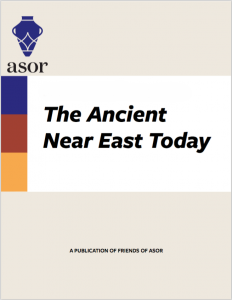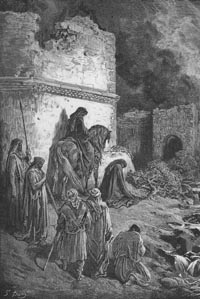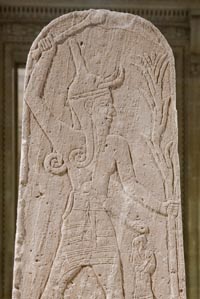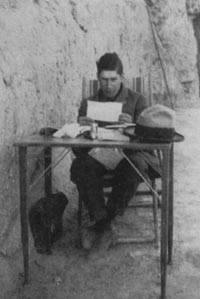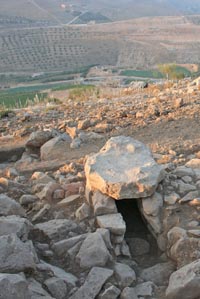

October 2014
Vol. 2, No. 10
Welcome to The Ancient Near East Today, Vol. II, No. 10! This month we travel from the threats to archaeology and heritage in the present, back to the fourth millennium BCE, with stops at Ugarit and the Netherlands.
We begin with a report by Kyrstin Husz on the efforts by the U.S. Committee of the Blue Shield to stem the destruction of antiquities and heritage in the Middle East. From there, Thomas Bolin looks at the history and archaeology behind some of the Bible’s lesser-studied books, Ezra and Nehemiah. Gregorio del Olmo Lete reviews some of the most interesting and important new discoveries in the study of Ugaritic language and culture, while Lucas Petit reviews the significant Dutch contribution to ancient Near Eastern studies. Andrea Polcaro and Juan Muniz bring us news from their excavations at the threatened Early Bronze Age site of Jebel al-Mutawwaq in northern Jordan. Finally, we’re pleased to bring you an assortment of recent reports by students supported by ASOR scholarships.
As always, we encourage you to send The Ancient Near East Today articles to family and friends, post links to Facebook and Twitter, and to be in touch with the editor. Remember, being a Friend of ASOR is free, so please spread the news!
 The 1954 Hague Convention at 60 – a Report on the Joint Annual Meeting of the Smithsonian Institution and the U.S. Committee of the Blue Shield
The 1954 Hague Convention at 60 – a Report on the Joint Annual Meeting of the Smithsonian Institution and the U.S. Committee of the Blue Shield
By Krystin Husz
The tragic events unfolding in Syria and Iraq are taking an immense human toll. But the costs to culture are also mounting. The U.S. Committee of the Blue Shield (USCBS) is a nonprofit organization committed to the protection of cultural property worldwide during armed conflict.
READ MORE
 What’s New with Ezra-Nehemiah
What’s New with Ezra-Nehemiah
By Thomas M. Bolin
What’s new with Ezra-Nehemiah? This might not be the most exciting discussion on the Bible you can think of, but give me the chance to convince you otherwise. Granted, the rebuilding of the Jerusalem Temple after the Babylonian Exile has not been the stuff of great biblical epic or Hollywood blockbusters.
READ MORE
 The Current State of Ugaritic Studies
The Current State of Ugaritic Studies
By Gregorio del Olmo Lete
No other language and culture of Northwest Semitic – the family of languages and cultures used in the Levant including Hebrew, Phoenician, and Aramaic – prior to the appearance of the Hebrew Bible has offered a similar corpus of linguistic and mythological material as Ugaritic.
READ MORE
 The Dutch and the Ancient Near East
The Dutch and the Ancient Near East
By Lucas Petit, National Museum of Antiquities
Cheese, windmills, and the sweet smell of marijuana in the city of Amsterdam have become famous icons of the Netherlands, a small country in Europe. But this is a very limited description of one of the most densely populated countries of the world, and one that has long been a leader in ancient Near Eastern studies.
READ MORE
 The Early Bronze Age I Site and Necropolis of Jebel al-Mutawwaq, Jordan
The Early Bronze Age I Site and Necropolis of Jebel al-Mutawwaq, Jordan
By Andrea Polcaro and Juan Muniz
Much of the archaeological landscape of the ancient Near East is rapidly disappearing. This is especially true for pre and protohistoric sites that lack the imposing size of tells. Features such as dolmens, aboveground stone tombs, are being especially hard hit and are under constant threat from stone quarries and modern farming.
READ MORE
